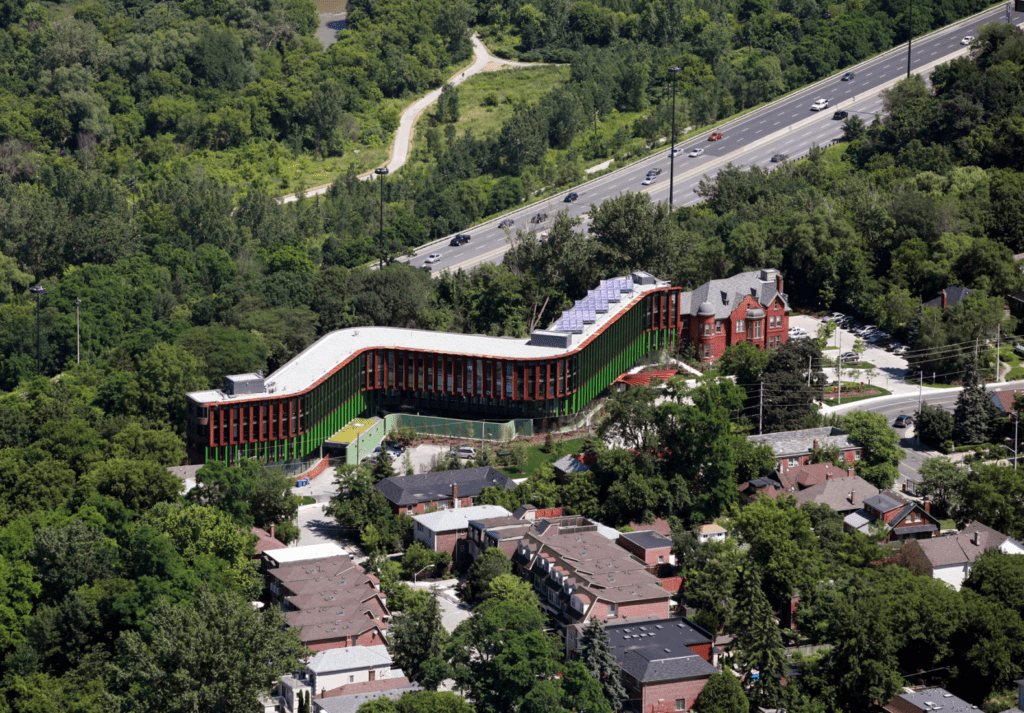Many of us take our homes for granted. Whether they’re tall urban skyscrapers or suburban homes down winding, tree-lined streets, we’re happy as long as they’re comfortable and secure.
No matter where we live, architects have thought of many aspects of our homes so that we don’t have to. They’ve considered seasonal heat and heavy snow loads, high rainfall periods, and ease of use. Below are some of the most innovative, beautiful, and functional homes in Canada that bring out the art form in architecture.
Kerchum Residence
A space doesn’t just have to cater to one mood or function; most of us want our homes to be cozy places of refuge for some of the time and fully functional entertaining spaces when the need arises. That’s what Frits de Vries had in mind when he designed Kerchum Residence in the Dunbar neighbourhood of Vancouver in 2009.
The solution he came up with: a residence with two distinct halves, separated by a central staircase. One side is large and open and melds together indoor and outdoor spaces. It’s got two-storeys, high-ceilings, and an airy feel, emphasized by access to a roof deck. The other side is more private, allowing space for close family time. It has three storeys above grade, with a fourth below grade that opens onto a sunken courtyard.
Environmental sustainability was a foremost consideration in the design and construction of Kerchum Residence. Considerations like a well-insulated building envelope, high-efficiency heating/cooling system that includes heat recovery and an air-to-water heat pump and in-floor radiant heat helped the building achieve the LEED Platinum certification, making Kerchum Residence the first home in Western Canada to receive the designation.
Leonard Avenue Modular Housing
Erected in 2005, the Leonard Avenue Modular Housing Project located in Toronto consists of two-storey prefabricated homes placed on top of an existing multifamily residence. Making best use of space with little development-ready land, the 26 units were placed while residents on the lower floors continued to inhabit their homes. The existing elevator core and staircases were extended to service the new homes, which were constructed in a way to create courtyard gardens.
Designed by Levitt Goodman Architects, geotechnical and engineering studies revealed that the building could withstand the added weight of the 220-square foot units without additional reinforcement, but a steel transfer grid distributed the new weight to the structural column bays below. The grid left enough room for cables and plumbing to service the dwellings above.
Each new unit was based on the design of an Airstream trailer, using tiny spaces and hidden alcoves to maximize on functionality.
Dockside Green
Dockside Green, by Bosa Developments, is a 1,200 unit master-planned community now selling in Victoria. Beyond merely residential units, the development includes 1.3 million square feet of office, retail, residential, and industrial space. One of the things that make the community so remarkable is its focus on sustainability—the community has been named the first Platinum-certified community in the world.
The community will include four separate residential structures, all built over a common parking structure. It uses an integrated energy system to allow the development to be greenhouse gas neutral. Meanwhile, onsite water treatment could save more than 70,000 gallons of water annually. Completion of condominium towers is expected in 2023.
Prices for condos in the current phase will see one-bedroom units starting at the high $400,000s, while two-bedroom units will start at the low $700,000s.
Residence for the Sisters of St. Joseph’s

A curved building sitting just at the crest of Toronto’s Don Valley, the Residence for the Sisters of St. Joseph is a healthcare and assisted living centre completed in 2013. Architects at Shim Sutcliffe created the home for 58 nuns in the firm’s first foray into the healthcare realm.
The residence’s first floor houses common areas like a lobby, chapel, a common lounge, and the main dining room, while residential suites are above.
The Residence was created with an eye on sustainability, with heat pumps and temperature control in each individual suite, many solar panels, a rain collection system, a green roof, and geothermal heating and cooling.
Habitat ‘67
Habitat 67 was originally created as the Canadian Pavilion for Expo ‘67, Canada’s world’s fair, as a solution for superior housing in dense urban environments. Architect Moshe Safdie wanted to wrap desirable elements of suburban living into apartment living. Designed by Moshe Safdie
The result is 158 residential units in the heart of Montreal. The suites are all different from one another. The entire structure is constructed of 354 identical prefabricated modules stacked together and connected with steel cables. Boxes are stacked so that apartments have their own rooftop gardens, and each unit gets air circulation and natural light.
In 2019, a unit in Habitat ‘67 was sold for $1,650,000. The unit boasts two levels, three terraces, and waterfront views.
Take another look
Architecture provides us with safe and secure homes built to the climate and weather conditions. However, take time to admire the beauty and artistry in the housing solutions they create: This list is just a small representation of the many great Canadian residential masterpieces.
Leave a Reply